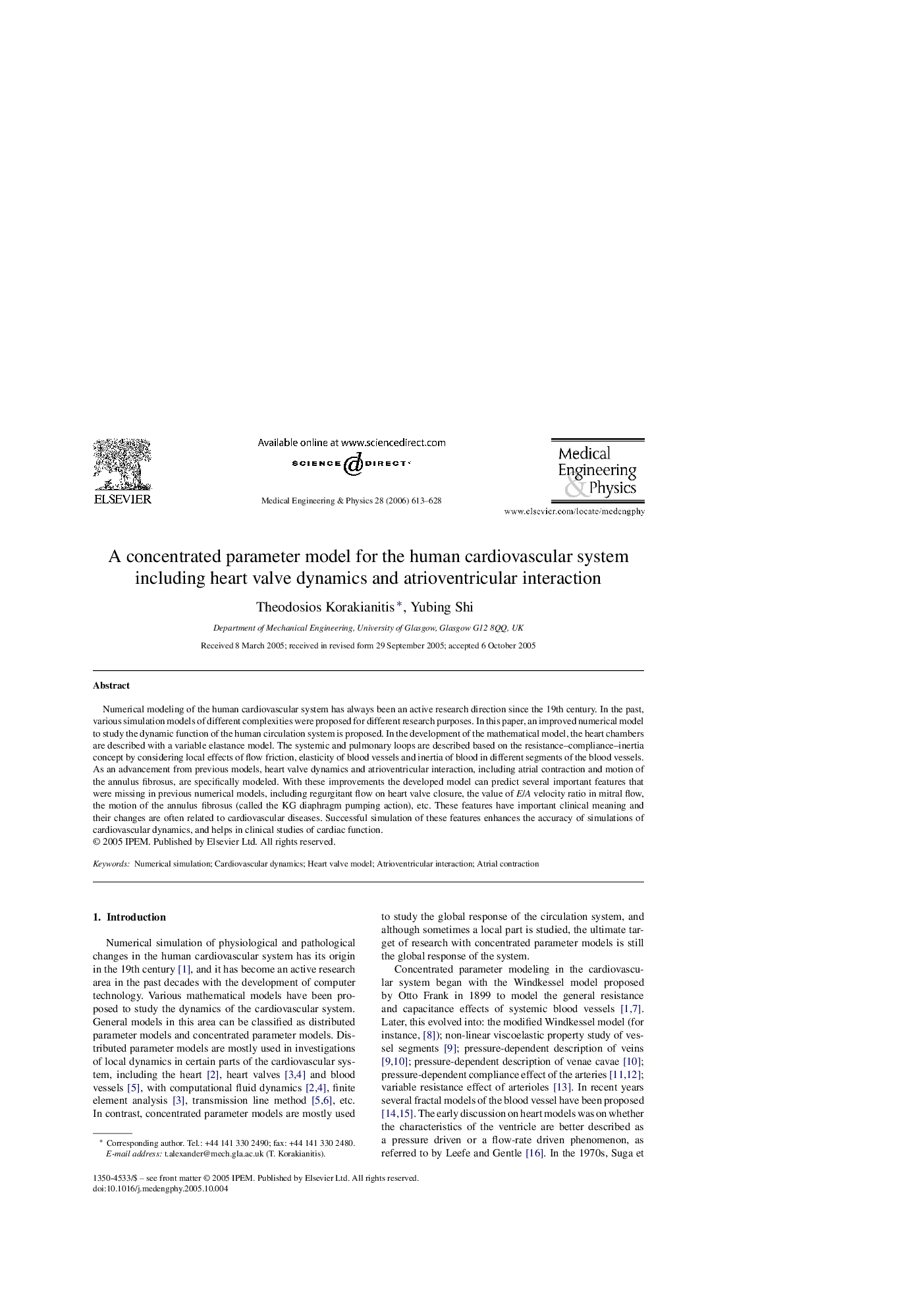| Article ID | Journal | Published Year | Pages | File Type |
|---|---|---|---|---|
| 876943 | Medical Engineering & Physics | 2006 | 16 Pages |
Numerical modeling of the human cardiovascular system has always been an active research direction since the 19th century. In the past, various simulation models of different complexities were proposed for different research purposes. In this paper, an improved numerical model to study the dynamic function of the human circulation system is proposed. In the development of the mathematical model, the heart chambers are described with a variable elastance model. The systemic and pulmonary loops are described based on the resistance–compliance–inertia concept by considering local effects of flow friction, elasticity of blood vessels and inertia of blood in different segments of the blood vessels. As an advancement from previous models, heart valve dynamics and atrioventricular interaction, including atrial contraction and motion of the annulus fibrosus, are specifically modeled. With these improvements the developed model can predict several important features that were missing in previous numerical models, including regurgitant flow on heart valve closure, the value of E/A velocity ratio in mitral flow, the motion of the annulus fibrosus (called the KG diaphragm pumping action), etc. These features have important clinical meaning and their changes are often related to cardiovascular diseases. Successful simulation of these features enhances the accuracy of simulations of cardiovascular dynamics, and helps in clinical studies of cardiac function.
